Non-Covid highlights of Irish Examiner 2020 coverage

Political Correspondent recounts the staggering display of hypocrisy at the golfgate event in Clifden, Co Galway when so many of the people in the country had already sacrificed so much.
REMEMBER when we were all in this together?



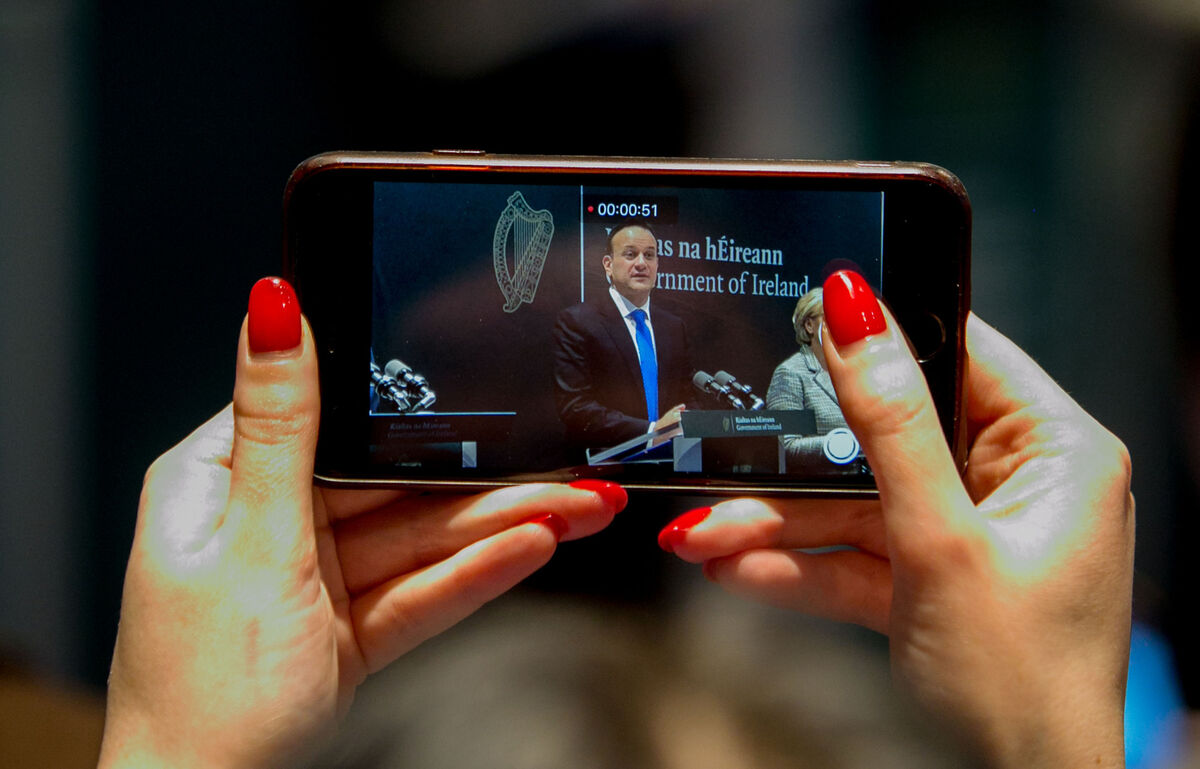
SINCE the foundation of the State in 1922, almost every important decision taken by a government has happened in this room.
Situated in the bowels of the imposing Government Buildings, the Cabinet Room represents the epicentre of our political system.
Many of the decisions taken in that room determine how we as a people live our lives.
All of that is done behind closed doors with very few people involved. The vast majority of us never get to know the conversations that go on, the deals done, or the bitter battles fought between ministers.
From the rocky and “truly awful” early days of this Cabinet under Enda Kenny in 2016 to tackling Brexit and now Covid-19 under Leo Varadkar, this Fine Gael-Independent government has endured many rocky and turbulent day times.
Bedevilled at times with vicious backbiting, infighting, distrust and downright hostility, the outgoing Cabinet of this minority government has survived, against the odds, for more than four years.
Described by Fergal Purcell, the former Fine Gael government press secretary as a very “effusive” or leaky Cabinet, what does emerge is a mere fraction of whatactually goes on.
“The Cabinet room is the one place where the grandstanding stops and real uninterrupted business can get done, even with all the leaks,” says one weary minister.
But as this government draws to a close, ministers past and present, advisers and officials have all spoken about what really goes on in the room and how tensions both within parties and between them are never far from the surface.
“There are pricks in there who you’d defend only for them to shaft you the next week,” is the honest assessment of one minster of their colleagues.
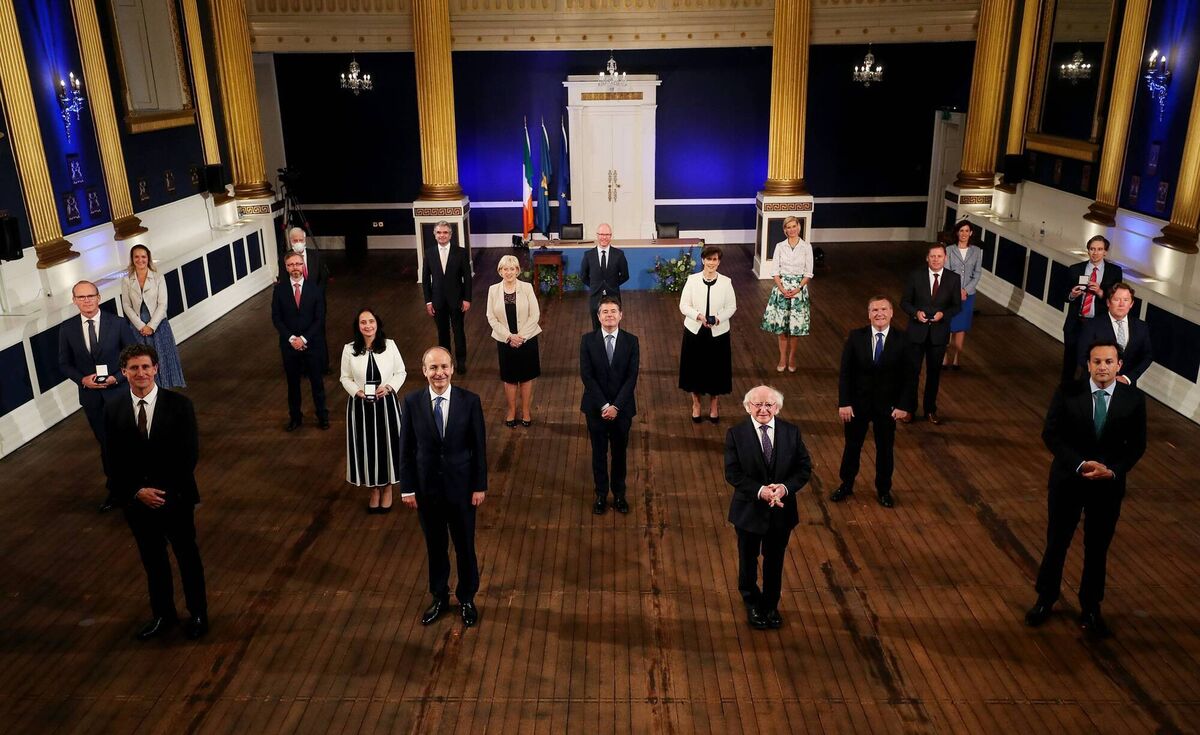
Contrary to widespread belief, a Cabinet decision tends to come at the end as opposed to the beginning of a lengthy process.
“Cabinet is often not where decisions are taken at all. It is all done in advance by advisers and it is often a rubber-stamping exercise. The decision-making process is a long one and the final step in that is Cabinet before it goes to the Dáil. Nobody brings a memo they know will be defeated,” says one minister.
The agenda for each government meeting is made up of memoranda brought by ministers and that agenda is confidentially available online to ministers, their private secretaries, secretaries-general and other approved personnel such as special advisers in advance.
Rarely will something get to Cabinet that has not been approved and cleared through the system. It normally will have been approved by ministers with a specific interest in a topic in advance.
“Leo has a civil servant called Andrew Munro, who is an assistant secretary in his department who is the gatekeeper. He draws the agenda together and is the interlocutor between officials in your department and all other interested parties,” says one minister.
Political and press advisers would meet the day before Cabinet in a bid to co-ordinate communications strategy, but also to iron out any potential issues.
If a problem did arise, often a call from a member of the “Army Council” — Varadkar, Coveney, Donohoe — could come to assuage any concerns, particularly in the independent ranks.
“Supposing someone had a memo and they had a worry about the Independents. The so-called sensible ministers would pick up the phone and say ‘let’s grab a coffee’ a day or two before Cabinet. They’d say ‘listen I know you have a problem with this but I would really appreciate your support on this thing’. That would be regular enough,” says one minister.
Getting a memo through Cabinet can be all-consuming and you need to have your homework done if you are not to be embarrassed.
“Before you went to Cabinet, you would make sure you had plenty of ministers on board. Beforehand, you tick tack with everybody and you make sure everyone is ok and you have a majority in support. You also make sure to get the nod from the Taoiseach, privately and discreetly.
“Leo prefers a more informal, but intense style. He is far more hands-on. Leo is far more on top of the material than Enda was, without question. He would know the ins and out of everyone’s department. He reads everything. He gets really irritated if someone flings a memo at the last minute,” says one minister.
Presenting memos at Cabinet, several ministers confess, is a daunting prospect.
“It is like giving a best man’s speech in that you don’t eat the dinner as you are waiting to do your thing, you are not focusing on what is being said. You are building yourself up.
“Once you get your memo approved, you tend to zone out for 10 to 15 minutes in order to compose yourself, you wouldn’t really know what is going on around you.” Despite all the “crime prevention” in advance, it does not always go to plan.
While it is rare that a memo not make it through, some notable examples have emerged. Memos get delayed sometimes due to workload but sometimes it happens when matters are not fully thought through.
Simon Coveney, in 2018 in the run-up to the abortion referendum, tabled a proposal which would require a two-thirds majority in the Dáil to amend any future abortion legislation.
The media was informed the night before but by the time Cabinet was over, the proposal was “dead in the water”, says a colleague.
“It was killed before cabinet but he asked for the AG to give his view on it to give him political cover. But he overplayed his hand on that one and he knew it.” Education Minister Joe McHugh recently tabled a proposal on reforming the allocation of Special Needs Assistants (SNAs) and according to many sources it emerged at the Cabinet that it was not ready to proceed. When he was OPW minister, Sean Canney had a memo about flooding which was kicked back.
“The Canney one was a bit of a mess and it was a case he hadn’t properly squared it off with anyone,” says one minister.
The first of two non-politicians who get to sit at the table is Martin Fraser, secretary-general to the Government and the head of the civil service.
A powerful and impressive figure, the music and sport-loving Dubliner is the only civil servant entitled to attend Cabinet. He sits to the immediate left of the Taoiseach by designation.
“Fraser is clearly a genius but he also has a temper and an arrogance. When he is brilliant, he is brilliant, but the very odd time he needs to be reminded he is not a member of the Cabinet,” describes one minister.
At the start of every meeting, Fraser reads out the minutes from the previous meeting and keeps a record of what is said.
According to several ministers, Fraser and Varadkar have not always enjoyed the most harmonious relationship with some suggesting he was “frozen out” from the Taoiseach’s inner circle when he took over in 2017.
Others insist Fraser is “definitely trusted” by Varadkar and his judgement is hugely relied upon.
The other non-politician who sits at the Cabinet table is the Attorney General. Seated by designation to the left of Fraser, Woulfe is the genial Fine Gael activist and Senior Counsel appointed in 2017 to replace Marie Whelan as the Government’s lawyer at Varadkar’s behest.
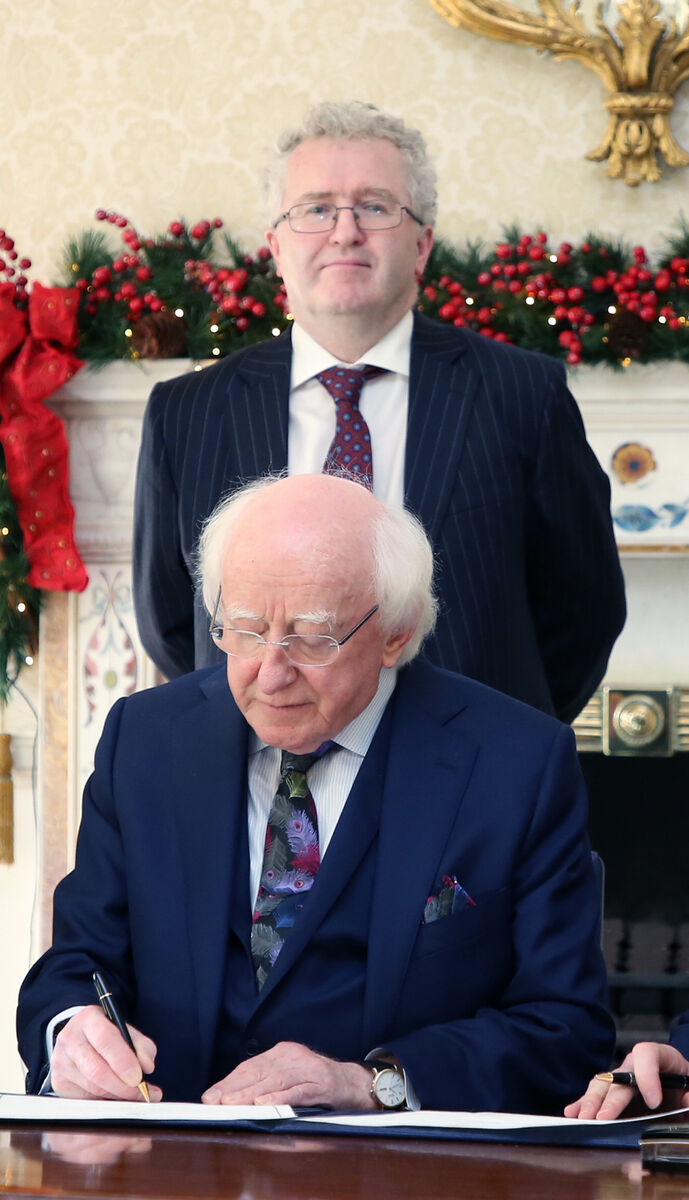
The 58-year-old Belvedere College-educated rugby enthusiast is another trusted adviser upon whom Varadkar relies. Those close to the Taoiseach rate Woulfe’s abilities highly.
“Seamus is sharp, has a good political antenna and solid judgement. I couldn’t fault him, Leo does rely upon him,” says one minister.
Others at Cabinet have a more mixed view of the AG.
Woulfe caused controversy in March 2018 when at a lunch he likened Shane Ross’ controversial Judicial Appointments Bill to a “dog’s dinner”.
While his point related to Opposition amendments to the bill, it had the effect of further undermining the credibility of the legislation which was already deeply unpopular among Fine Gael ministers.
Woulfe was seen by Shane Ross and the Independents to have acted politically in his utterances but this has been denied.
“That was something he made a mistake over. He should not have said it,” one minister stated.
Varadkar for his part was worried that the comments could ignite into a proper government crisis, but as one source says, he was relieved that it turned out to be a “one-week wonder”.
Without doubt, Ross became a lightning rod for controversy within Cabinet and beyond.
While many ministers have said that since Varadkar became Taoiseach, the vast majority of relations have been cordial, there have been a small number of exceptions and Ross has generally been at the centre of them.
The two big issues of annoyance with Ross were his “quest” to reform the judiciary and his controversial drink-driving legislation.
“It would really annoy us when Shane thought he was Minister for Justice. Sometimes, he had more interest in Charlie Flanagan’s brief than his own. Charlie was remarkably patient with Ross,” says one minister.
“The attacks on Ross were not political, they were accurate. He rarely brings a memo from his own department, when he does you are not sure if he is across them properly or has he just been handed them by his officials. He picks fights on petty issues. I wouldn’t be overly impressed by him,” says another.

Others have countered that because Ross and McGrath made such an issue of the judges, there was a tendency at Cabinet for the likes of Michael Creed and Flanagan to “put him through the ringer” when he was bringing a memo.
Even those ministers who would be more supportive of Ross say he didn’t “play well with others”.
“Shane could be very black and white, stubborn. He was too black and white and as a result, made a lot of enemies,” says one minister.
The other matter which caused internal Cabinet conflict was the Minister for Transport’s drink driving legislation.
While it had been painted as a Fine Gael versus Independent Alliance row, Cabinet sources say it was far more of an urban-rural divide.
“Paschal, Leo, Harris and Coveney were very supportive of Shane in terms of the main thrust of the bill. Others however like Ringer, Creed and Heather were opposed and that became quite fraught,” a minister says.
One of the most dramatic episodes that Varadkar’s government encountered was the circumstances which led to the resignation of his tánaiste Frances Fitzgerald in November 2017.
“That was a moment I’ll never forget. And just how it happened was bizarre,” says a minister.
Following the inability of the Department of justice to properly answer questions about the treatment of Sgt Maurice McCabe at the O’Higgins Commission, Fitzgerald found herself at the centre of a political storm.
After a weekend of crisis talks between Varadkar and Micheál Martin, the Taoiseach was left in no doubt that resignation was needed for the Government to survive.

Fitzgerald, who had been justice minister at the time of the O’Higgins Commission, was in the firing line and pressure came on her to stand down to spare the country a general election.
The night before Cabinet, there was a botched release of emails which appeared to cast doubt on Fitzgerald’s position about what she knew of how McCabe was to be treated on the stand by lawyers acting for the Garda commissioner.
The morning of Cabinet, Fitzgerald bowed to the inevitable and offered Varadkar her resignation in his office. It was a disastrous start to his term as Taoiseach.
The normal pre-Cabinet meeting of Fine Gael ministers was cancelled.
“While her resignation was somewhat expected, it was still not fully clear what was going back and forth to the last minute and nothing was quite inevitable that morning as to what was going to happen.
“Eventually, Francis appears down in the ante-room and had a cup of tea. She doesn’t disclose her intention to any of us. Then the Cabinet meeting starts and she announces her resignation and left the Cabinet.
“It was like a political assassination before my own eyes. It was one of those moments and you ask yourself ‘did that actually happen.’ It shows how you can be there one minute and gone the next,” describes a minister.

One of the Government’s worst moments was the mishandling of the National Children's’ Hospital in December 2018 when the price tag for the project jumped by €400m overnight.
It was a collective Cabinet mistake, described as “a fuck up,” by one minister.
In a rush to clear the decks before the Christmas break, Simon Harris tabled a memo for Cabinet detailing the significant cost increase to the project.
“It was never properly communicated across Cabinet in a timely fashion what was going on. When it came, it came at the 11th hour at the last meeting of the year. All this other shit came from health on the same day,” a minister says.
The scale of the problem was underestimated by everyone, another minister now admits.
“No one foresaw just how big a deal it would become. When it did become a big deal, Harris cloaked himself in the Department of Public Expenditure and Reform and it worked and it damaged Paschal. It took Paschal some time to recover his credibility.” Harris argued for the Government not to do a ‘mea culpa’ but rather defend the cost increases. Harris was overruled and the Government came out with its hands up, but it was very damaging.
Read More

For citizens that have endured so much, the response to the disaster shows the resilience of its people
TURNS out, it only takes a split second for 150 people to die. Only takes a split second for 300,000 people to become homeless.
It only takes a second for a city, a nation, a people to be felled by a blow so cruel it barely seems real.
At 6.04pm on Tuesday, Beirut was its usual entropic self; traffic was suffocating, the heat unmerciful. But, as with all great love stories, the very idiosyncrasies that would drive a man to drink are the ones that make a place so easy to love.
The beating heart of this city is its chaos. To live here is in it itself an act of love. If you didn’t, you’d simply leave.
Full disclosure; I was asked to write a first person account of what happened on Tuesday evening. I’ve no desire to. I’d much rather a Beiruti could tell their story. It seems to me, in the raw aftermath, that my pain is one, visceral, asphyxiating thing. But theirs is something else entirely. But since I have a voice, it’s better to use it than bottle it. Maybe some good will come from that.
So, forgive the “I”, forgive the “me”, they are the necessary tools of this tragic storytelling. But this is not my story, this is the story of a city — a country and it’s people that seem irreversibly cursed.
I used to think curses were for Mayo and the Red Sox. Tuesday evening destroyed that naivety.
Not long before 6pm, I rolled down the Gemmayze strip, my home these past two years, considering a run later that evening.
By the time the angelus bells rang, I was sitting on the rooftop of my building with a friend. Then, we heard a booming noise I will never forget. We looked skyward, towards the endless blue, as if curiously accepting something truly terrible was about to happen. It was.
Maybe it was Orwell, maybe it was Hemingway, but one of them wrote that the gitanos — the gypsies of southern Spain — believe a man’s world will ‘move’ twice in his life. It may be as light as a tremor, or as violent as an earthquake, but move it will. I had always figured the sentiment was figurative, not literal, which perhaps points to the complacency and privilege of my upbringing. Well, when the blast came, I was blown some 20 feet. But the blast itself was only the start of it. The real hell was to follow.
Descending the stairs, the devastation was quickly apparent, punctuated by the screams of delirious neighbours.
The violence that followed beats me. I’m not good enough or talented enough or together enough to articulate it in print. There does not exist enough whiskey in the Levant to aid me.
I tip my cap to those friends who were also there, who did it so well. I feel no guilt for not being able to write it better. The guilt is for other things, like being left without so much as a scratch, while so many others suffered.
All I know for certain is that, a minute later, at least 150 people were killed. They may not have died in that instant, but it was the events of that terrifying minute that killed them.

A minute that rendered well over a quarter of a million people homeless and over five thousand people injured. Many of them my friends. By the time I made it to the street, it seemed the world was ending; shirtless men with bloodied heads running aimlessly.
Women in bare feet carrying bloodied kids, sprinting for what they were only guessing was safety. Everyone was bracing for a second blast. The bookstore I live above, run by Niamh from Laois, was a mangled mess. This was the street my kids learned to scoot on. The street upon which I drank cold beers on long hot evenings. The street I ran intervals on. Now, it was Picasso’s Guernica realised.
I live two hundred metres from the Red Cross. I couldn’t see the building for the smoke and dust and debris. We eventually found two young medics to help us move an injured neighbour. We got her to the car, now without windows and a collapsed roof, and we set off in gridlocked traffic for the hospital. Any hospital.
All of us here saw and felt it differently; one friend was visiting former students of hers, migrant workers from Sudan who came to Beirut for a better life. They saw the smoke and went outside before being blown back indoors. Many others, sitting in traffic, saw the mushroom cloud, then felt the force of the blast. Those inside their homes were smashed by doors blown off hinges.
Hours later, when I returned to what was left of my apartment, I found an elderly neighbour sitting on a plastic chair in his doorway. His place was decimated. Yet it was there he was going to spend the night.
He was not for moving. Honestly, there was no place to bring him.
In the two days that followed, thousands of volunteers, many of them among the homeless, descended on Gemmayze and Mar Mikhel — the ground zero of this God-awful mess — and began the clean-up. It was humbling to witness. You’d guess if this was anywhere else, the streets would justifiably be empty for fear of personal safety.
Not here. They are wired differently in Beirut. They shouldn’t have to be, however.
It has seemed for so long that Lebanon has been broken, but not broken enough to be fixed.
The platitudes we will all bestow them, saluting their resilience — disguises a harder truth; nobody should need to be this resilient.
It may be they are so because of something inherent, or it may simply be the world they live in has left them with no choice.
This too shall pass. The sun also rises. Whatever. Beirutis have heard it all before. This is a city that has seen it all, but this may just be it’s darkest hour.
“Pity the Nation” wrote Kahlil Gibran, but trust me, they don’t need nor want pity. They deserve much, much more than that.
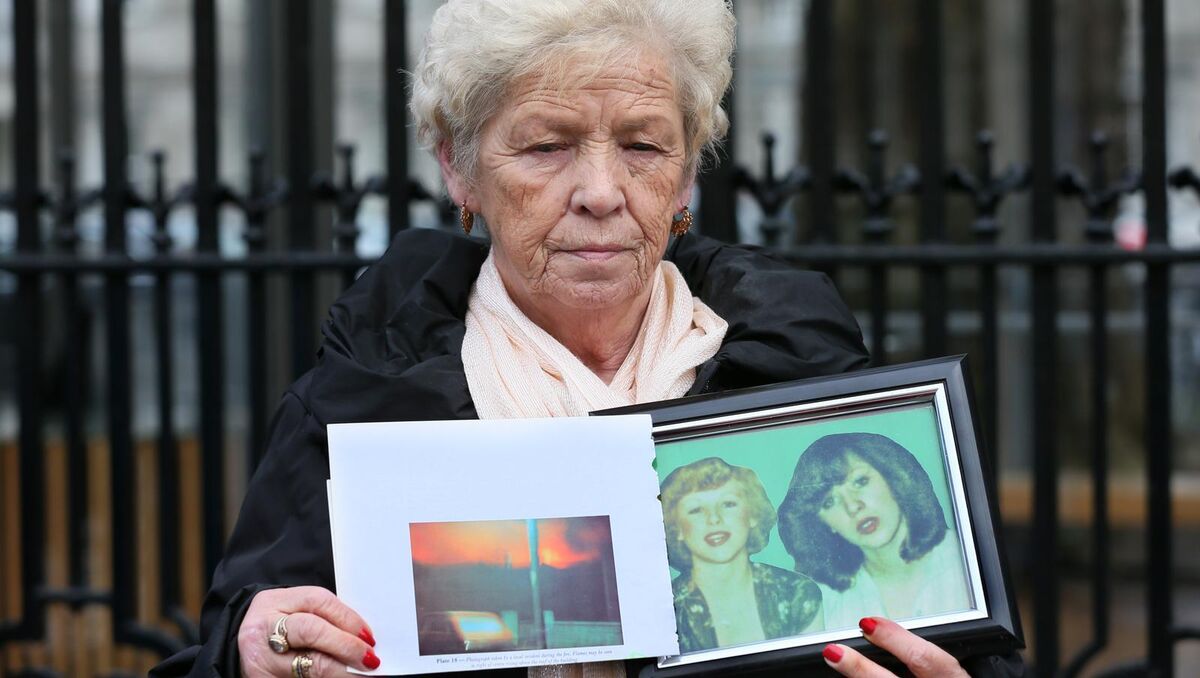
Some ordinary people are made extraordinary by things in their life they cannot control.
Christine Keegan who died on Tuesday, was one of those people.
She, along with her husband John, lost their two teenage daughters Mary and Martina in the Stardust fire on Valentines Day 1981. Their third daughter Antoinette survived the fire, spending weeks in hospital recovering, during which the heartbroken parents kept the news from her that her sisters had died.
Christine, who did not ask for this purpose in life, campaigned from the day after the fire until the day she died for justice for her daughters, and the 46 other young people who died in the blaze.
Some people command a sense of respect without saying very much, this too was Christine.
She was quiet and stoic. She welcomed journalists to her home where she would relay the worst night of her life, waking up to the news and rushing to her daughters rooms to find they didn’t come home from what was supposed to be a very ordinary night of teenage revelry.
She cried quietly at times, each knock back taking their toll. Each inquest that incorrectly labelled the dead as arsonists, or when the owner of the building won compensation from Dublin corporation, while parents without their children made do, carrying their sadness like a cross on their back.
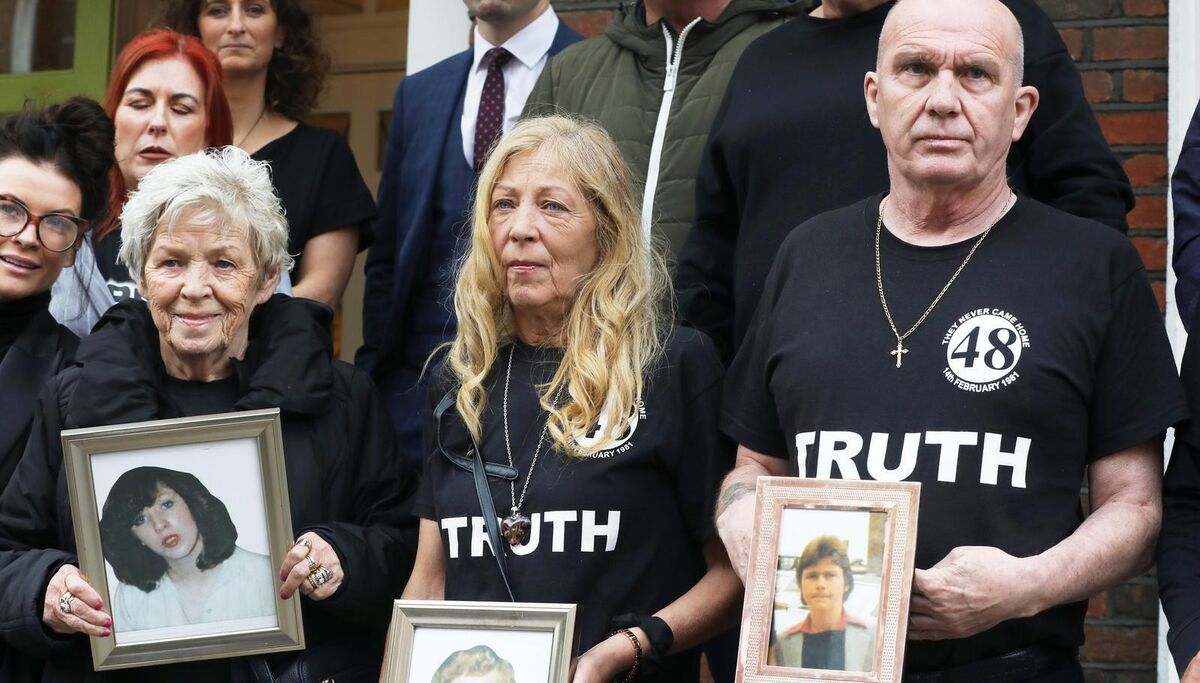
When I first met Christine, she was the first to tell me: “If this was in Donnybrook, not Bonnybrook, people would care,” and who can blame her?
The Leinster House of 1981 didn’t care much for the plight of their northside neighbours.
Like a beacon of working class resolve, they kept on, determined.
Antoinette who has spent her life at her mother’s side spoke at times of giving up, but said looking at Christine pushed her on until they won.
A fresh inquest was granted by the Attorney General last year and has been put on pause due to Covid-19. Christine, arguably the most prominent parent, was one of the few left, as time and life trundles on, sweeping what remaining parents there were living without their babies up with the wind.
Christine was denied seeing her life’s dream realised, like she was denied a life with her daughters. A woman who battled such extraordinary sadness with little complaint, like hundreds of Irish women before her, and that alone should be Ireland’s greatest source of shame.











